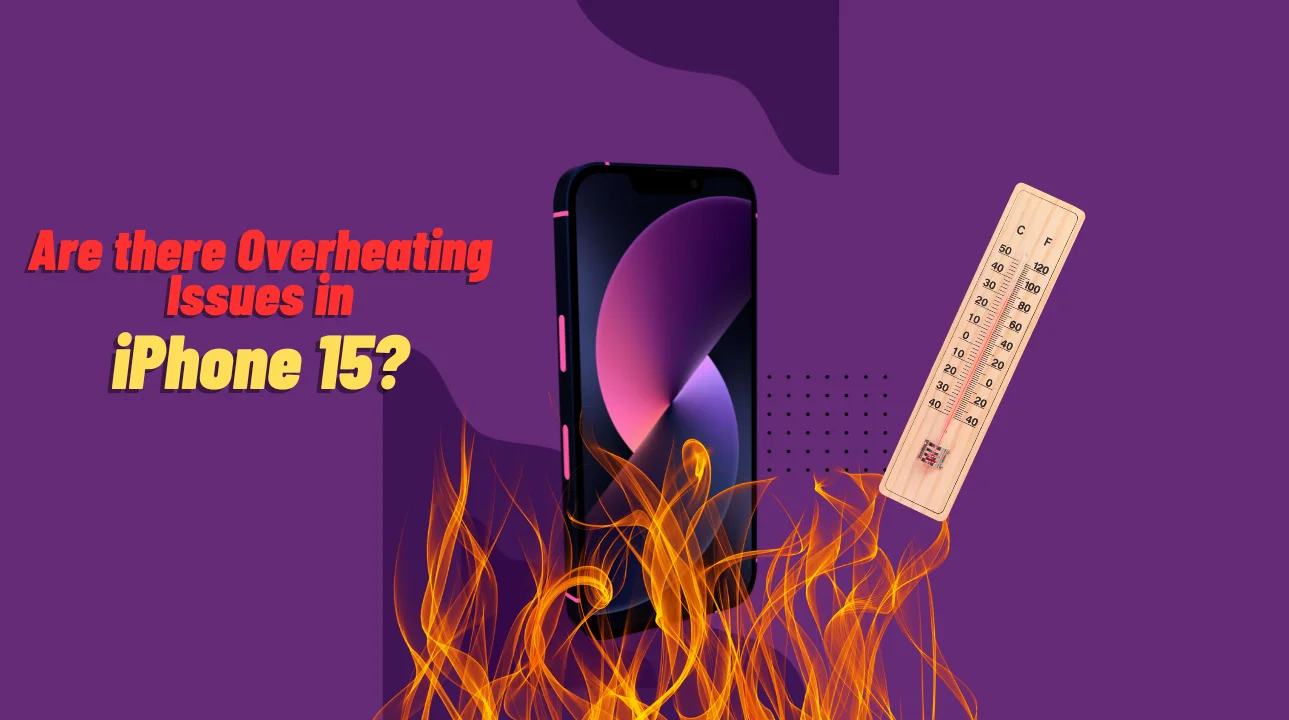iPhone 15 Overheating Issue: Causes and Best Solutions?

The iPhone 15 overheating issue mainly occurs due to its advanced processor’s demand for high power. This coupled with inadequate thermal management which ultimately leads to excessive heat generation.
Unlike previous models, the iPhone 15’s processor operates at significantly higher clock speeds to increase thermal output. Additionally, the compact design makes effective heat dissipation.
Key Factors for the iPhone 15 Overheating Issue
Processor Efficiency
To obtain the highest performance the balance between processing power and thermal output is key.
Thermal Design
The iPhone’s sleek design limits the space for effective heat-dissipation components.

Comparing Thermal Solutions
Historically, iPhone models have utilized passive cooling mechanisms. However, with the iPhone 15’s enhanced capabilities this approach proves insufficient.
A comparison with previous models highlights the need for a more robust cooling system.
Past Solutions
Passive Cooling
Effective for lower-power processors but falls short of the iPhone 15’s high-performance demands.
Innovative Cooling Techniques: Exploring Alternatives
To address the overheating issue, exploring alternative cooling techniques is essential which includes.
Active Cooling Systems
Incorporating small fans or liquid cooling systems though challenging given the device’s size.
Advanced Materials
Utilizing materials with higher thermal conductivity for better heat distribution.
Challenges
Space Constraints
Implementing these solutions within the limited space of a smartphone is a significant engineering challenge for Apple.
Battery Life Impact
Active cooling systems may drain the mobile battery much faster than usual usage.
Optimizing Software for Better Thermal Management
Software optimization plays a pivotal role in managing heat generation. Strategies include.
Throttling Algorithms
Adjusting processor performance based on temperature.
Efficient Resource Allocation
Ensuring that apps and processes utilize the processor efficiently.
Potential Improvements
Machine Learning Algorithms
Predicting and managing processor load more effectively.
User-Controlled Settings
Allowing users to choose performance modes based on their needs.
Addressing User Concerns
Users are understandably concerned about safety and device performance. It’s crucial to address these concerns transparently.
Safety Measures
Implementing fail-safes like automatic shutdown at critical temperatures.
Performance Balancing
Communicating the trade-offs between performance and heat generation to users.
Communication Strategy
Clear Guidelines
Providing users with information on optimal device usage to prevent overheating.
Regular Updates
Keeping users informed about ongoing improvements and solutions.
Conclusion
The iPhone 15’s overheating issue is a very complex and difficult challenge that requires a multi-layered approach to solve the issue. Balancing performance with effective thermal management is key. This involves a combination of hardware innovations, software optimizations, and user knowledge. Apple’s commitment to addressing these concerns will be crucial in maintaining user trust and device integrity.







